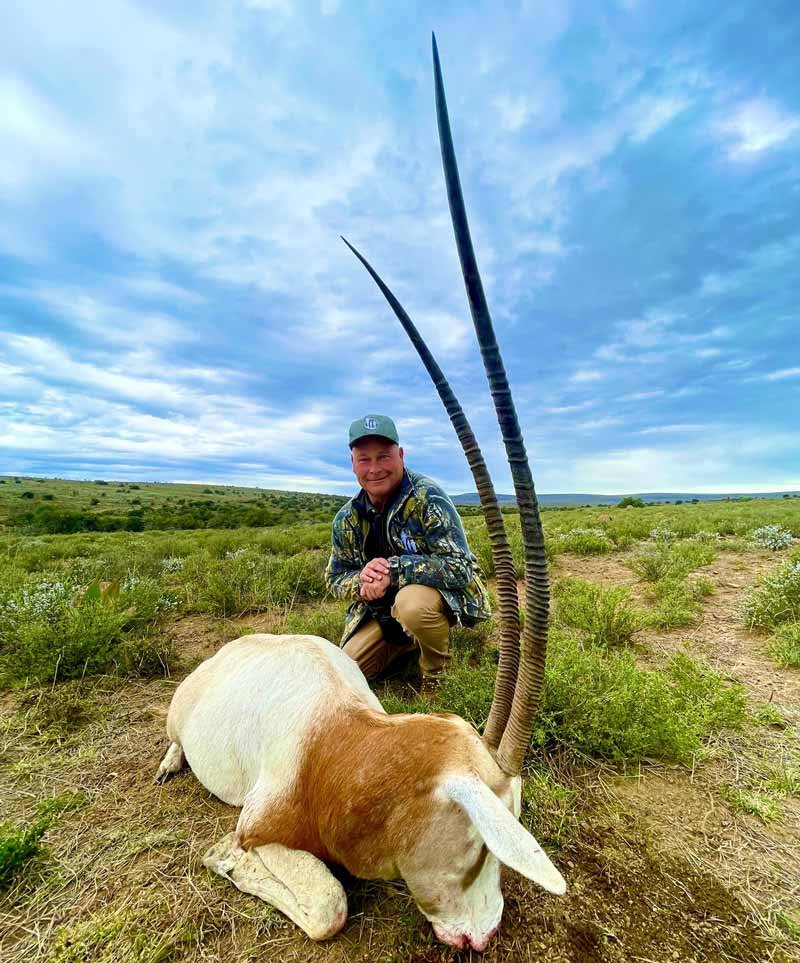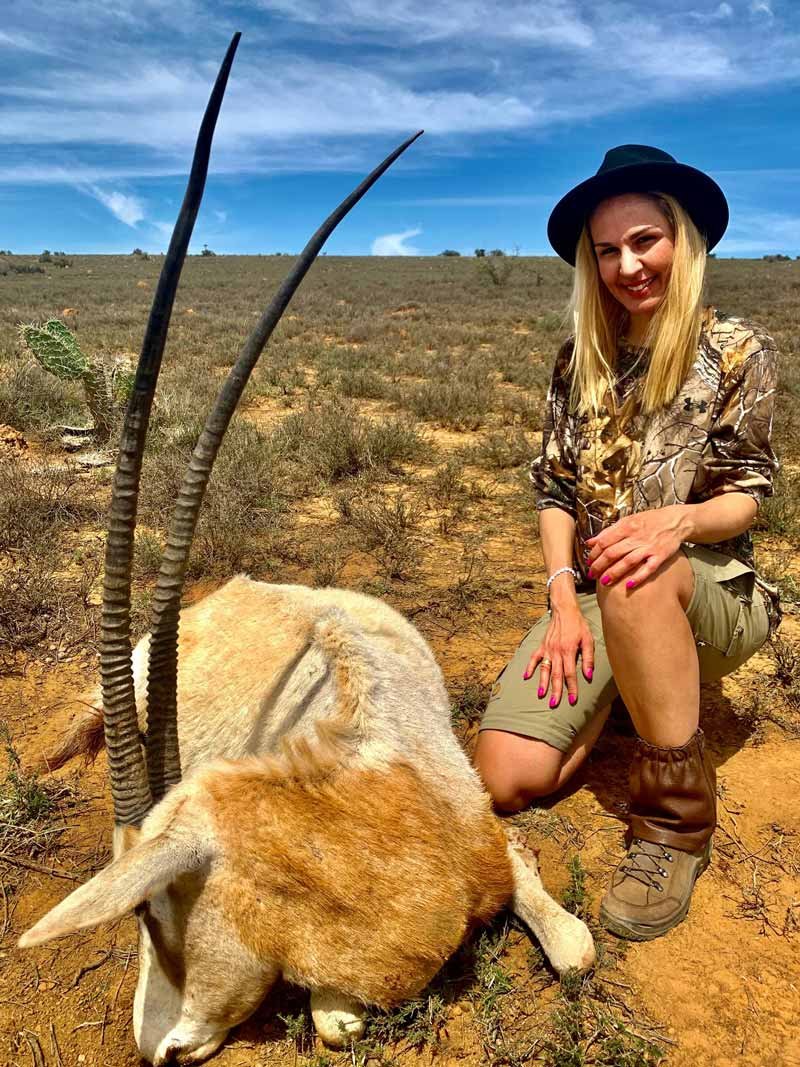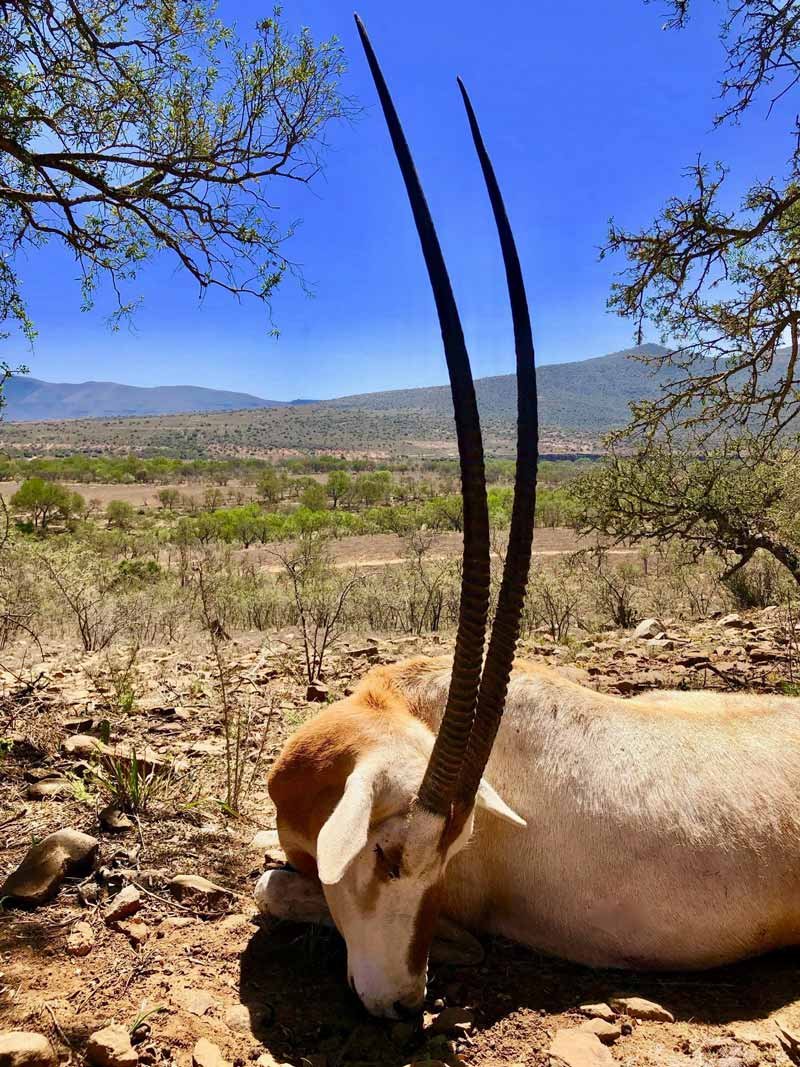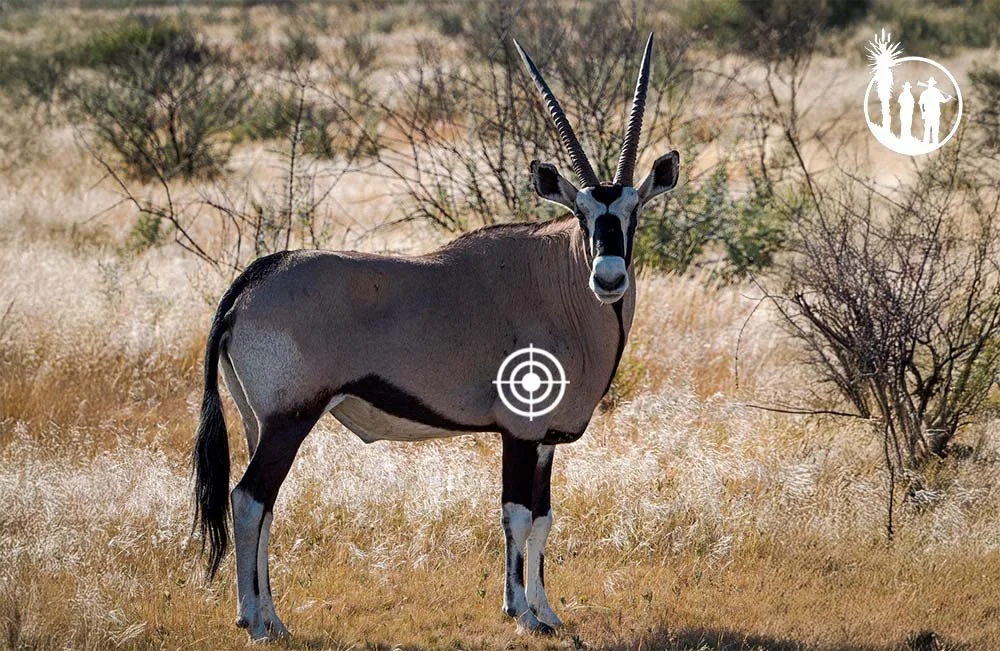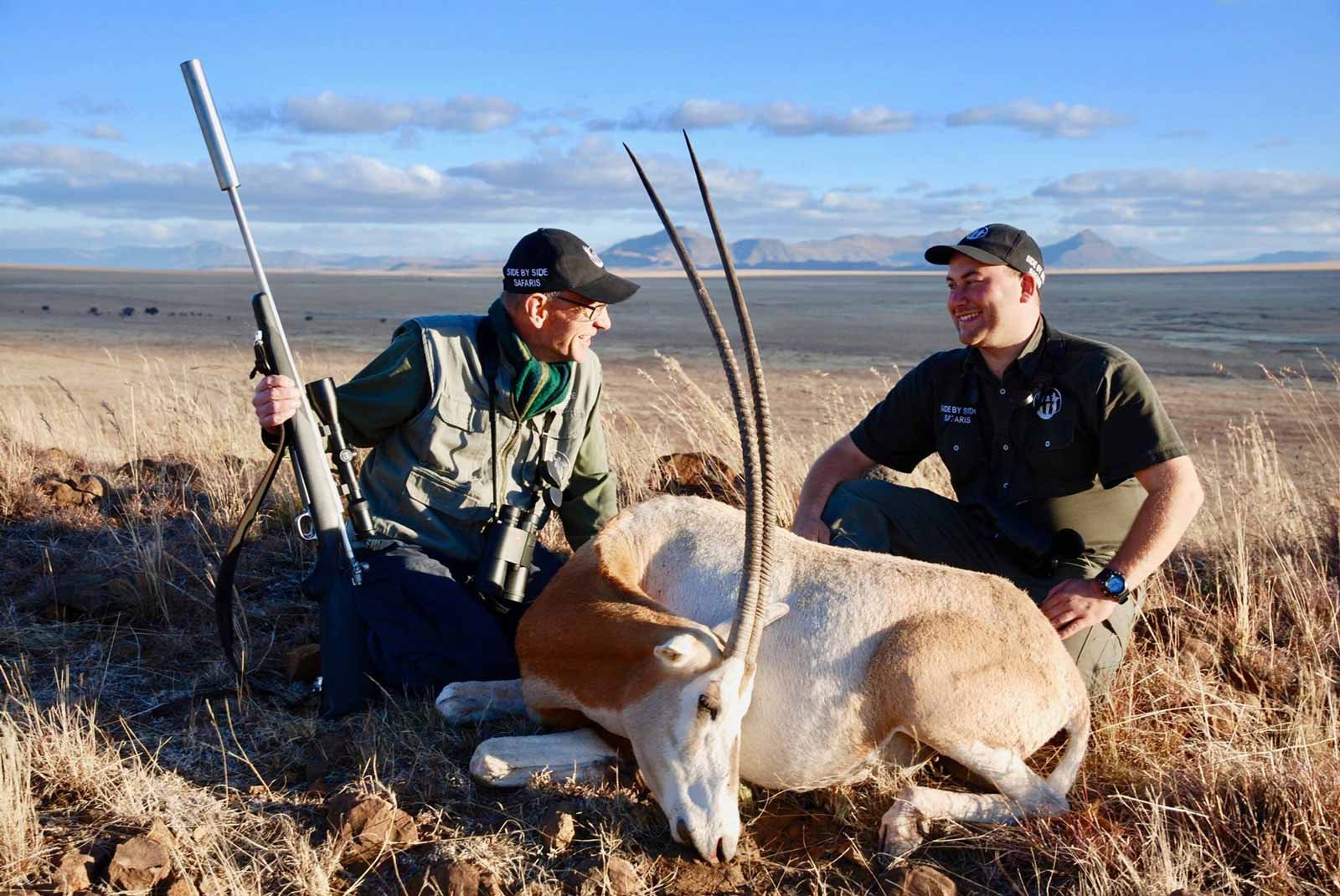
Scimitar Horned Oryx
Scimitar-horned Oryx – Elegance, ethics, and desert heritage
The scimitar-horned oryx (Oryx dammah) is one of Africa’s most unique and visually striking antelopes. With its pristine white coat, chestnut neck, and long, backward-curving horns, it stands out as a refined and sought-after trophy. Though extinct in the wild, conservation and regulated hunting have brought the species back in strong, self-sustaining populations.
At Side by Side Safaris, we offer scimitar oryx hunting in expansive, open landscapes in South Africa’s Eastern Cape. Here, your hunt will focus on respect, precision, and an unforgettable plains game experience.
A species built for survival
Originally native to the Sahel and Sahara regions, the scimitar oryx is perfectly adapted to heat and drought. It can go for weeks without free-standing water and thrives in arid, open spaces. Its hardiness makes it ideal for rewilding projects—and for hunting in free-roaming conditions in large game reserves.
Unlike more nervous species like kudu or bushbuck, the scimitar oryx is observant and composed. This gives hunters the rare opportunity to assess the animal, position calmly, and take a well-placed shot with intention.
The hunt – deliberate and refined
We apply a traditional walk-and-stalk approach, combined with glassing and terrain knowledge. Distances typically range from 80 to 200 meters. With its white hide and dramatic horn silhouette, the scimitar oryx is easy to spot—but not always easy to judge.
Younger animals also carry long horns, so correct trophy evaluation involves examining horn mass, curvature, and body condition. The finest trophies feature symmetrical, sweeping horns and a well-developed chestnut shoulder.
Rifle and caliber recommendations
The scimitar oryx is large and robust. We recommend:
Caliber: .30-06, .308, 7mm Rem Mag, .300 Win Mag
Bullet: Premium bonded soft points or monolithic solids
Optics: High-transmission variable scope with rangefinder
Shot placement – precision over power
The Scimitar-horned Oryx has same shot placement as the Gemsbok.
Place your shot broadside, just behind the front leg and one-third up the body. The heart lies farther forward than expected. On quartering shots, aim toward the opposite leg to ensure vital penetration.
The oryx often takes a hit without reacting dramatically, so a clean, confident shot is essential to minimize tracking.
Trophy value and aesthetic
This is a trophy of distinction—not just for horn length (35+ inches is considered excellent), but for its symmetry, coloring, and symbolism. The elegant white coat and long, curved horns create a dramatic visual presence.
Whether you choose a shoulder mount or a full-body piece, a mature scimitar-horned oryx is a centerpiece in any serious plains game collection.
Conservation through precision hunting
This species is ideal for hunters seeking elegance, ethical hunting, and legacy. It's not dangerous—but it commands respect and rewards focus.
📩 Get in touch now to learn more about availability and trophy classes
👉 Book a free hunting consultation
Facts - Sce
imitar horned Oryx
NAME: SCIMITAR HORNED ORYX
SCIENTIFIC NAME: ORYX DAMMAH
WEIGHT MALE: 140-210 KG
WEIGHT FEMALE: 91-140 KG
SHOULDER HEIGHT MALE: 1.3M
SHOULDER HEIGHT FEMALE: 1.2 M
MATING SEASON: THROUGHOUT THE YEAR
FAQ - Scimitar-horned Oryx
-
A large white antelope with backward-curving horns, native to North Africa and now thriving in private game reserves.
-
Yes. Hunting occurs within regulated populations that fund conservation and responsible breeding.
-
.30-06, .308, 7mm Rem Mag, or .300 Win Mag with quality bonded or solid bullets and a reliable scope.
-
Broadside, behind the front leg, one-third up. The heart sits farther forward than it appears.
-
Horns over 35 inches with good symmetry and curvature, plus strong body condition and coloring.
